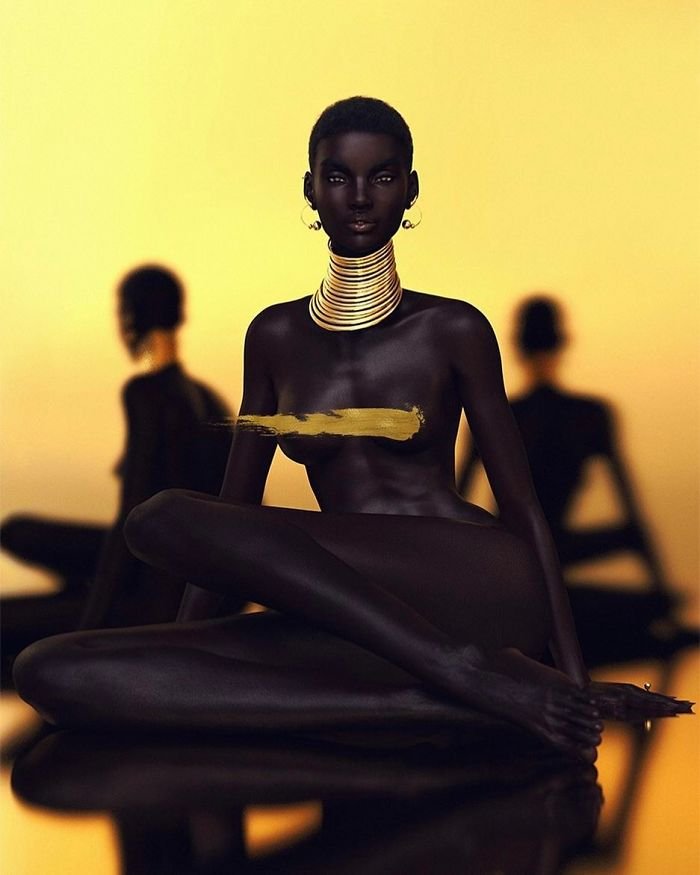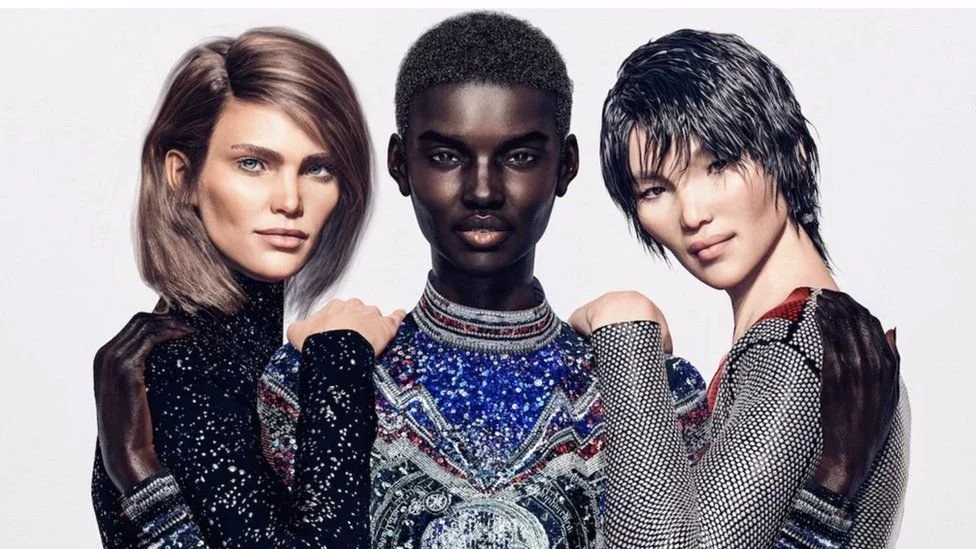The Rise of Digital Modelling in Fashion Photography
It’s safe to say that the past year has been a bit of a whirlwind. Our lives have been turned upside down and while some industries have thrived off the COVID 19 pandemic, others have shut down completely. COVID 19 has had an incredible impact on the way that we go about our daily lives and what we do from one day to the next. Multiple lockdowns have meant that we have had to find new and creative ways to entertain ourselves and our children. Before the outbreak of the virus, our lives revolved around work, shopping, entertainment and spending time with family; whereas, during the pandemic, we have been deprived of these daily rituals.
Despite the devastating effect of the virus, there have been some positives in the photography sector, as it has taught us to think about new ways of creating imagery. Most notably, the digital revolution of the fashion industry.
‘Vogue Italia March 2020 by Mert & Marcus’
Going Digital; The Digital Model
One of the main things that has come out of the pandemic is our new reliance on technology and the internet. Although the digital world was a huge part of our lives before COVID 19, it has become even more prominent over the past year. Small business and shops who have had to close down during lockdowns have turned to technology to help them stay afloat; this has lead to an increase in digital marketing, online shopping and advertising on social media channels. There has been a noticeable ruse in online shopping, given that we have been confined to our homes, unable to attend the local shops.
This newfound reliance on digital technology has made waves in the fashion and modelling industry. On account of social distancing and lockdowns, models have been unable to work on photo shoots for major magazines and fashion editorials. One fo the worst parts of the COVID 19 outbreak was that photographers were unable to work without access to models and shoot locations. Photographers often rely on collaborating with others in order to achieve their vision; this includes make up artists, stylists, models, venue owners and more. The lack of these collaborators means that photographers have had to rethink how they create artwork independently.
This setback lead to an incredible change in fashion photography, whereby images of real models were merged and manipulated in order to form hyperrealistic digital models! One project by the infamous duo, Mert Alas and Marcus Piggot, used images of real models and manipulated the images to create entirely new digital models! The Vogue Italia March 2020 cover featured a digital model sporting a dress by Chanel. This was an exploration of the artificial versus the real, questioning the difference between what can be digitally created and what cannot.
A New Approach to Model Bookings
There has also been a shift in terms of how models book work in the digital fashion sector; Ubooker is a digital modelling agency that was set up by Nicola Scagnolari. This agency allows models to produce photographs remotely through working with stylists and make up artists online. These models then work can then work with photographers to produce fashion imagery from home to be used for magazine and fashion editorials. This new system has encouraged models to take more of a lead in the artistic direction and production of photographic imagery.
AI, Technology and 3D Fashion
‘Shudu’ by Cameron James-Wilson
The advancements in AI have also contributed towards the rise of digital modelling in the industry, such as Rosebud AI based in San Francisco. This startup company was founded by Lisha Li and a team of AI experts who specialise in creating digital imagery and videos. This company began using images of mannequins and turning them into AI generated models. Once again, this worked as an effective solution for models and photographers who were unable to work during the COVID 19 lockdowns.
Similar to Rosebud, other tech companies joined the fray to create 3D fictional models in place of human models. The Diigitals is an endeavour which began when an Instagram influencer named Shudu started gaining popularity on social media; this character was very mysterious and lead people to question who she was and where she came from. Her Instagram following continued to grow, and her images were reposted by brands such as Fenty Beauty who believed her to be a real model. It came to light that Shudu was not a real person at all! In fact, she was a digital project, entirely fabricated, by the photographer Cameron James-Wilson.
It is not surprising that people considered Shudu to be a real model; the supermodels we see in magazines and clothing commercials are not entirely real themselves. Although photographers use models as their subjects, they edit and airbrush them until they become an enhanced version of their true selves. There is very rarely a fashion photograph that has not been edited using Photoshop and other Adobe software. Perhaps, this is why we have turned to a more digital way of making. Cameron James-Wilson was inspired by the Princess of South Africa Barbie Doll, as well as supermodels such as Naomi Campbell. Shudu is now known on Instagram as the ‘first digital supermodel’. From this point onwards, The Diigitals strived to champion diversity and inclusivity in the modelling world through creating digital models who stand for under-represented communities.
3D fashion has become a major trend since the beginning of 2020. The Congolese fashion designer, Anifa Mvuemba, released a new collection from her clothing brand, Hanifa. This range was showcased on Instagram in May 2020, showing off an array of digital models and digital designs. One of her main aims was to include all different body types through these digital models, ensuring that her collection was as inclusive as possible. With these incredible advancements in technology, it leaves us thinking about whether models are even necessary for creating photographic artwork.
Do We Still Need Human Supermodels?
The popular use of AI and 3D software has almost made the need for actual human beings redundant. However, I would argue that there is still a desperate need for human models in the fashion industry. The time, effort and resources needed to create these digital models is astronomical; in most cases, it would probably be easier to hire a real model rather than going to the pains of building one from scratch. Although the digital models that have been exhibited are hyperrealistic, they cannot compare to the authenticity of a real person. Models express emotion that cannot be conveyed through a computer generated body; the expressiveness and movement of real models is what makes them relatable to those who idolise them. It is admirable that some of these tech companies and fashion designers are using 3D models to pioneer a body positivity movement, but this can just as easily be done with real models who are made of flesh and blood. Models are often depicted as creatures of perfection, showing us an ‘ideal’ person who we should all aspire to; but there is true beauty in imperfection and that is what makes us human.
CGI models Margot, Shudu and Zhi in a campaign for luxury label Balmain. Courtesy Balmain
Ultimately, the rise of digital modelling is absolutely astonishing; its efforts should surely be admired and continued in the pursuit of fashion, photography and art. The digital era is a time to be celebrated, but not to be used as an excuse to eliminate authentic human models. Finally, virtual models and real models should work alongside each other to praise and pay tribute to the world of fashion.
If you are looking for a photographer to creatively direct a project or shoot you are planning, please feel free to get in touch with me at contact@kathannon.com or fill out the contact form on my website.



